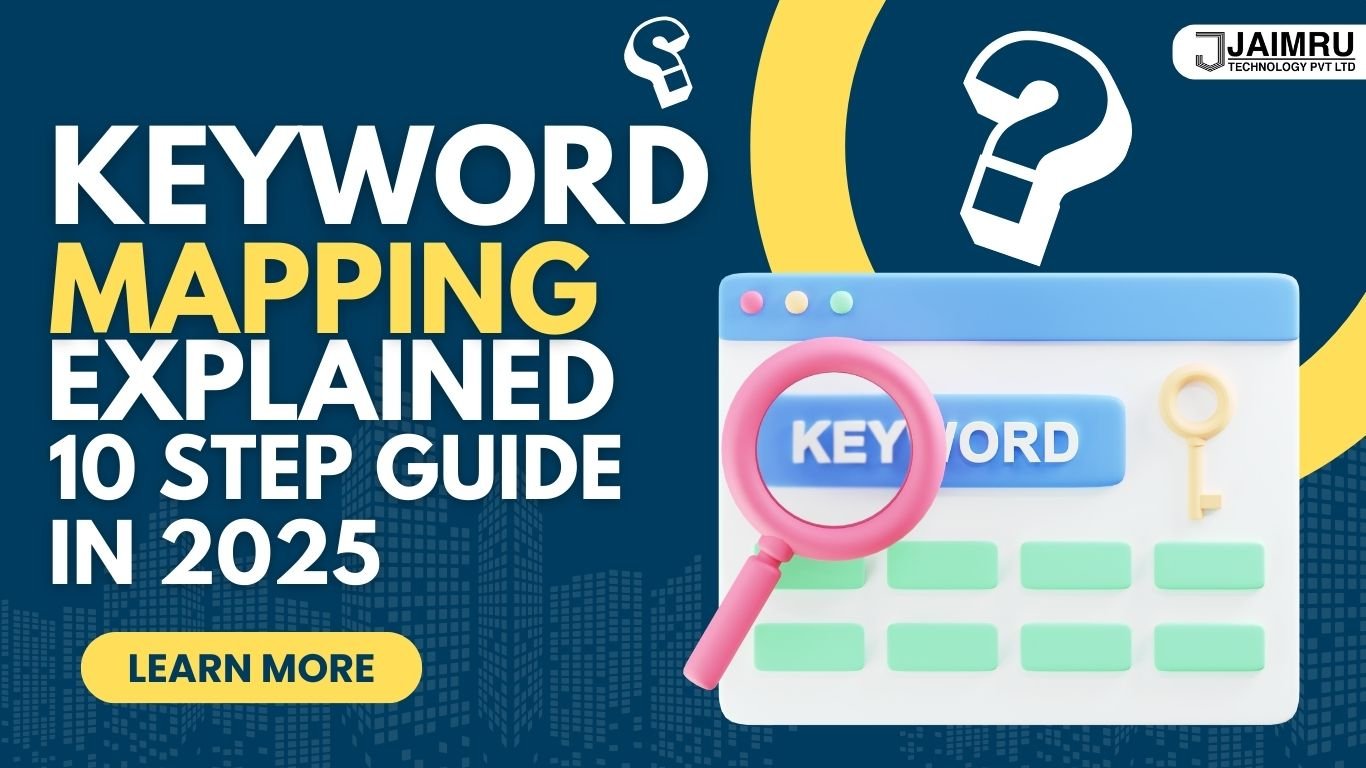
Posted On : 30-04-2025 16:41:00
If you’re serious about SEO in 2025, keyword mapping needs to be part of your strategy. It's thbridge between your keyword research and content creation — aligning your website pages with the right keywords to improve visibility, drive traffic, and enhance user experience.
In this step-by-step guide, we’ll explain exactly what keyword mapping is, why it matters, and how to do it effectively in 2025 using modern tools and techniques.
Keyword mapping is the process of assigning target keywords to specific pages on your website based on relevance and search intent. Instead of randomly stuffing keywords across pages, you create a strategic structure where each keyword (or group of keywords) is tied to the content that best satisfies that search query.
In simple terms: one page = one primary topic = one main keyword (plus related ones).
The digital landscape is more competitive than ever. With search engine algorithms evolving toward user intent and semantic understanding (thanks to AI and natural language processing), random keyword use just doesn’t cut it anymore.
- Prevents keyword cannibalization (where multiple pages compete for the same keyword)
- Boosts on-page SEO relevance
- Improves site architecture and internal linking
- Enhances content planning and topic clustering
- Helps Google better understand your site’s structure and authority
Let’s walk through the complete keyword mapping process step by step.
Use tools like:
- Google Keyword Planner
- Ahrefs
- SEMrush
- Ubersuggest
- Surfer SEO
- ChatGPT (with browsing)
Find a mix of:
- Short-tail keywords (e.g., “web design”)
- Long-tail keywords (e.g., “affordable web design company in Delhi”)
- LSI keywords (semantic variations and related terms)
Focus on search volume, difficulty, search intent, and commercial value.
Read More: SEO Keywords: What They Are, Best Practices, and How to Rank in 2025
In 2025, intent is king. You must determine why someone is searching for that term.
- Informational: "how to do keyword mapping"
- Navigational: "Ahrefs login"
- Transactional: "buy SEO services in India"
- Commercial: "best SEO agency in Delhi"
Assign each keyword to the appropriate content type: blog, product page, service page, FAQ, etc.
Before creating new content, analyze your current pages. Tools like Screaming Frog or Sitebulb can crawl your site and export all your URLs.
- Identify duplicate content
- Detect low-performing or cannibalizing pages
- Group similar content topics
Create a spreadsheet of URLs and map them against any relevant existing keywords.
Instead of mapping each keyword separately, cluster related keywords around a single topic.
Example:
- Primary: “mobile app development company”
- Secondary: “top app developers,” “mobile app services in Delhi,” “hire app developers”
This way, you build a topical authority page rather than spreading yourself thin.
Set up a document to track all keyword assignments. You can use Google Sheets or Excel.
Your columns might include:
- Page URL
- Page Title
- Main Keyword
- Secondary Keywords
- Search Intent
- Content Type
- Current Rank (optional)
- Status (existing / to create / update)
This becomes your SEO blueprint.
Now that you have clusters and existing pages listed, assign keywords:
- Map one primary keyword to each URL
- Ensure no two URLs are competing for the same main keyword
- Assign related/secondary keywords where appropriate
- Keep the user intent aligned between keyword and content
Your mapping sheet will expose missing pages or untapped keyword opportunities.
Example:
If you have a keyword like “progressive web app development” and no page targeting it, that’s a gap. Plan to create a blog or service page around it.
Tools like AnswerThePublic or AlsoAsked.com can help expand topic clusters.
Once mapping is done, start optimizing content:
- Use the primary keyword in title, H1, meta description, first 100 words, and URL
- Sprinkle secondary keywords naturally
- Use schema markup, internal links, and structured content
- Improve readability and user experience
- Add media (images, videos, infographics)
Remember, it's not just about keywords — content must satisfy user intent fully.
Your keyword map allows you to create strategic internal links between related pages.
Example:
Your blog on “Benefits of mobile apps” can link to your “Mobile App Development Services” page using contextual anchor text.
This strengthens topical clusters and improves crawlability.
Keyword mapping isn’t a one-time task.
Review your map every 3–6 months:
- Add new keywords
- Reassign outdated ones
- Optimize declining pages
- Adjust based on Google algorithm updates or industry shifts
Use tools like Google Search Console and Ahrefs to track performance.
In 2025, AI-assisted SEO tools like Surfer, Clearscope, and even ChatGPT can:
- Suggest keyword clusters
- Identify intent
- Recommend headings and content structure
- Auto-generate keyword maps from website audits
Take advantage of these to save time and improve accuracy.
Keyword mapping is foundational to SEO success. It ensures your website is organized, intentional, and optimized for both search engines and users. In a world where content is exploding and competition is intense, the brands that map smartly will win.
Whether you're an SEO expert or a small business owner, mastering this 10-step keyword mapping process in 2025 will help you dominate the SERPs, drive more traffic, and convert better.
Copyright 20-2025 Jaimru Technology Private Limited | All Rights Reserved.